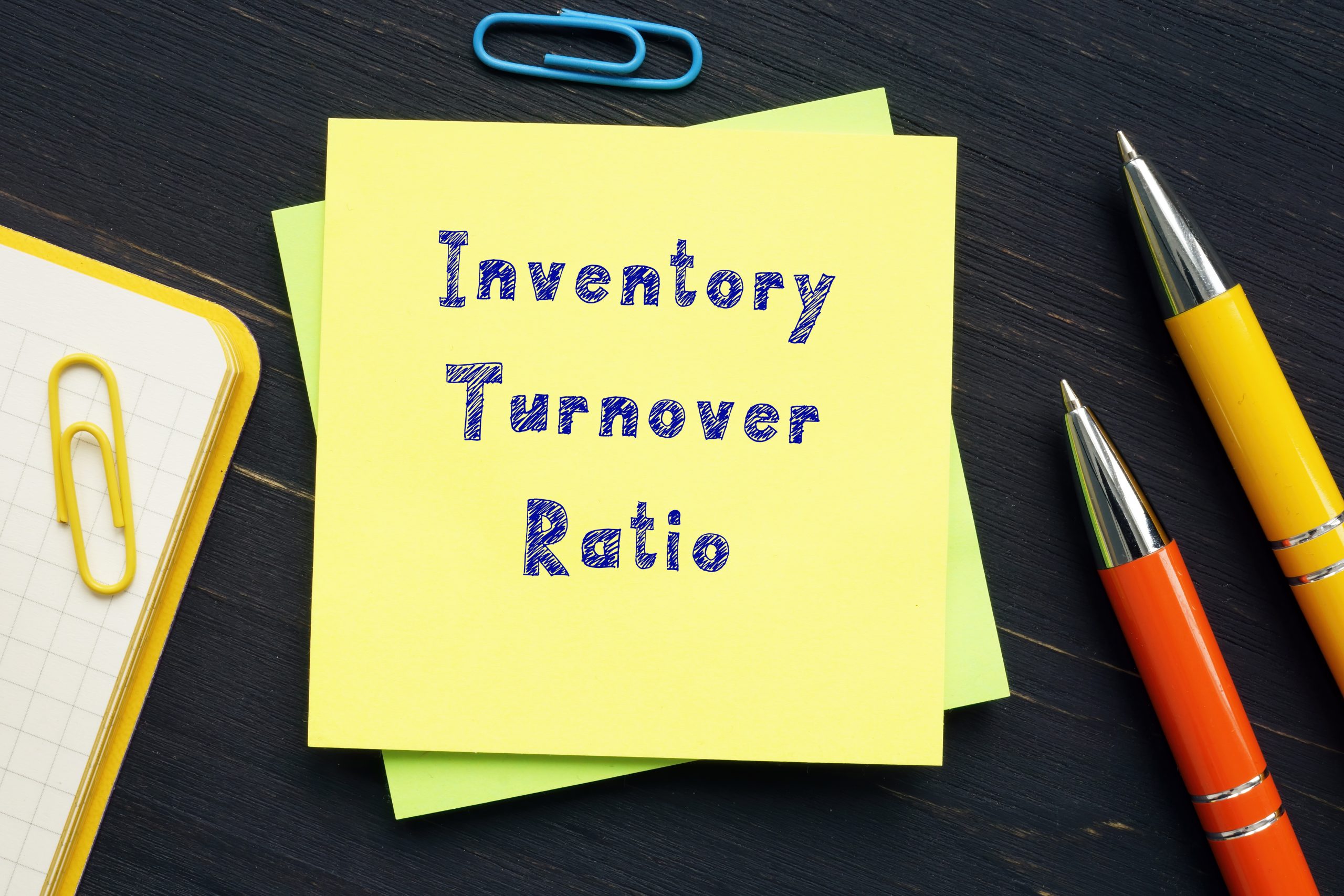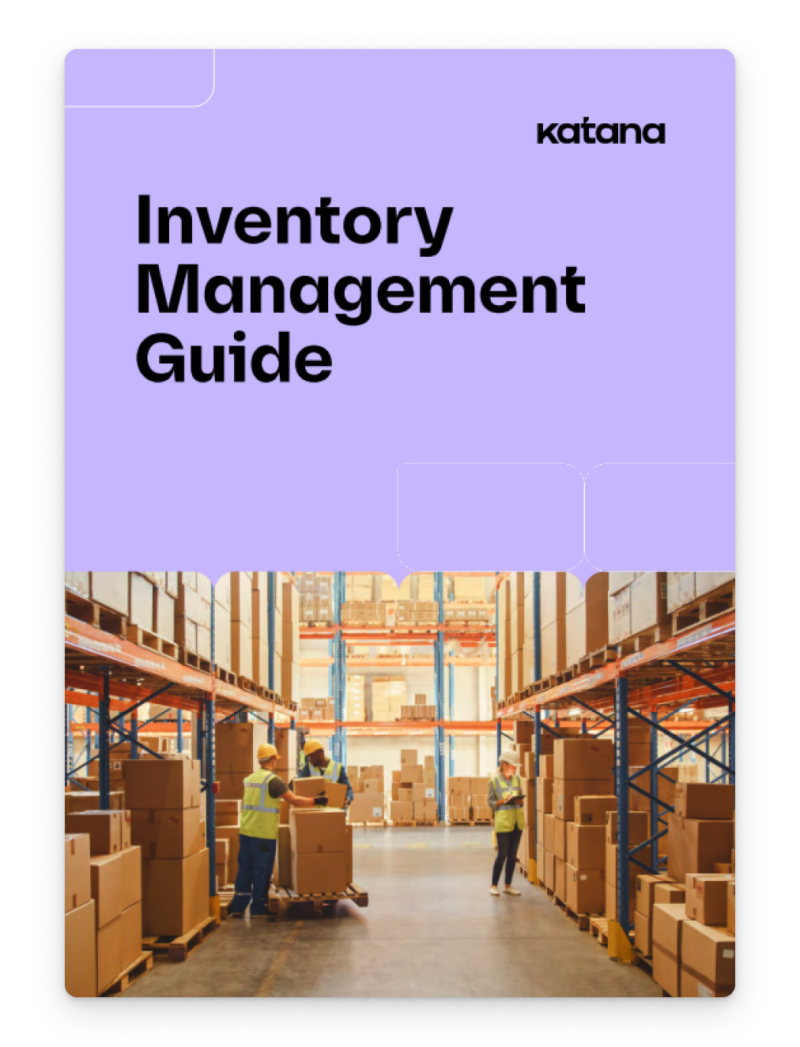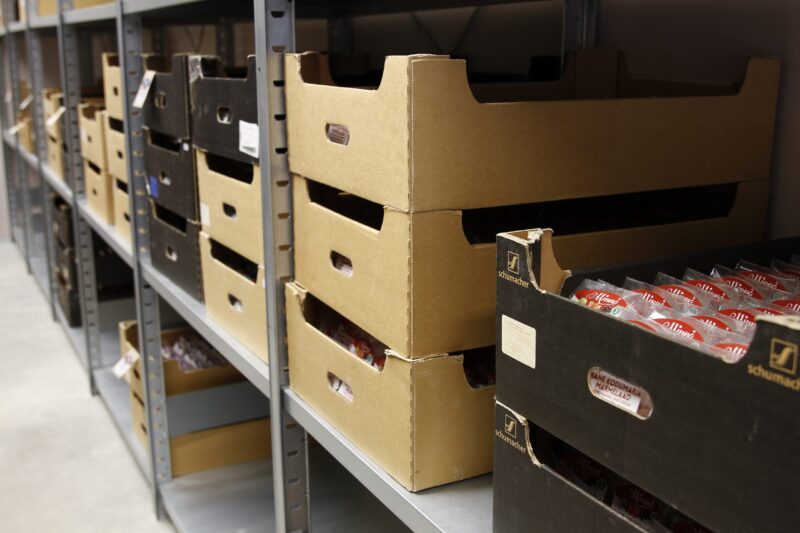How to improve inventory turnover ratio
As a seller of physical goods, you must understand how to manage your inventory for your business to keep growing. Inventory management is not only about the materials and goods you have at any time. It’s also important to consider the rate at which inventory arrives and leaves your shop floor. Your inventory turnover ratio is the amount you sell in relation to your average inventory.
It is a critical business performance metric, yet many manufacturers neglect this. Knowing about your stock turns helps you to make decisions about your business.
It helps you answer questions like:
- Am I keeping too much inventory at one time?
- Are my carrying costs too high?
- Am I selling enough?
- Are my manufacturing costs too high?
- Am I producing orders fast enough?
These questions go to the heart of inventory management and production flow. Therefore, you need to know how to calculate your inventory turnover. Your optimal turn rate depends on the size of your business and what you manufacture.
This article helps you learn how to increase inventory turnover, understand what is a good inventory turnover ratio for manufacturing companies, and how to apply it to your business.
What is inventory turnover ratio?

Inventory turnover ratio is how often your company sells its inventory during a given period.
The inventory number is not your maximum inventory but your average inventory over this period. This includes raw materials and direct labor costs, like when calculating the cost of goods sold.
Say you keep a constant stock of 10 items, and you sell 50 over a month.
You would have turned over your inventory five times. Knowing this ratio helps you make decisions for your business. Remember, sales revenue alone is not sufficient to gauge the success of a business.
You could have millions of dollars in sales revenues, but you’re in trouble if your expenses exceed this.
That’s why business guides stress the importance of always knowing your costs.
Get the ultimate guide to inventory management
A comprehensive ebook that covers everything you need to know about inventory management.

Why is inventory turnover ratio important?
Inventory turnover ratio is a crucial measure of efficiency, as it calculates how much a business sells as a percentage of its total inventory. It tells you how much you sell as a ratio to what you keep in stock. This ratio tells you how many times you fully replenish your stock in a period.
For example, a company might have a vast average inventory but relatively low sales.
Can it justify having such large inventory levels if it turns over its inventory only once or twice a year? Well, the answer depends on several factors.
Large enterprises can afford to maintain a high average inventory because they sell a lot and have the funds to offset the required costs. It’s an inventory strategy used by manufacturers that mass-produce goods every day. This strategy is successful for large enterprises, so small businesses should seek to copy it, right?
Well, probably not.
Many assume a scaling manufacturer is just a scaled-down version of a large one — but this assumption could be detrimental to the business. Scaling manufacturers usually produce more high-end goods. This means they use more expensive raw materials with possible bespoke features. The mass production model is lacking in these kinds of businesses, as they rely on higher margins for a few products.
If a business keeps tons of stock waiting, it could lose money without realizing it.
Analyzing your inventory turnover allows you to scrutinize your business in a way you couldn’t do with the naked eye. Are you stocking more inventory than you could ever need? Calculating your inventory turnover ratio lets you know about this.
How to calculate inventory turnover ratio (ITR)?

To calculate your inventory turnover ratio, you need to know the following metrics:
You can find your COGS in your annual income statement.
To calculate average inventory, find the value of your entire inventory at the beginning and end of the financial period. Again, the right software can help you keep accurate records of this. Once you have done this, add your beginning and ending inventory together. Divide it by two to get your average inventory.
Inventory turnover ratio formula and calculations
Now plug the numbers into the inventory turnover ratio formula:
Inventory turnover ratio = COGS / Average Inventory
So, if your company has a monthly average inventory of $5,000 and a COGS of $7,000, you will have an inventory turnover ratio of 1.4. That means you have turned over your inventory just under one and a half times.
If you want to calculate the average time inventory is on hand, divide your inventory turnover ratio by the number of days. For example, calculating your inventory for October, it would be:
31 / 1.4 = 22.14
This means you turn over your inventory once every 22 days or so.
Let’s try another example of an inventory turnover ratio over one year. Say you are a high-end bicycle manufacturer.
You have a boutique store with one bike of each model you produce. This lets you save money and improve customer satisfaction by having bespoke manufacturing requests. Customers come in and buy your bikes to order.
Each bike costs $1,400 to produce, so you start with $9,800 in inventory. Because you practice lean inventory, you have limited raw materials and MRO in stock, valued at $1,200. That’s a total starting inventory of $11,000.
You have added two more models to your range by the end of the financial year. That, plus raw materials, comes to $12,900.
Average inventory = (11,000 + 12,900) / 2 = $11,950
The cost of goods sold comes to $87,000.
Inventory turnover ratio = 87,000 / 11,950 = 7.3
So, the value of the average inventory was turned over 7.3 times.
To determine how many days it takes to turn over inventory once, divide the number of days in a year by your inventory turnover ratio. This tells you this business took just over 50 days for one inventory turn.
Want to see Katana in action?
Book a demo to get all your questions answered regarding Katana’s features, integrations, pricing, and more.
What is the best inventory turnover ratio for manufacturing?

Manufacturing encompasses a wide range of industries, and the products manufactured range from cupcakes to jet engines. The ideal inventory turnover ratio for the manufacturing industry highly depends on the specific company’s products and processes. That being said, a good target inventory turnover ratio for manufacturers is often between 5 to 10 times per year.
Besides differences in industry, the size of the business will also determine the best inventory turnover ratio.
Large manufacturers produce and sell a lot, so they can afford a make-to-stock approach because they have a large budget and surefire demand. This is the key to not over-stretching yourself as a manufacturer. By having in-depth historical records, they can analyze them to see any changes and adjust their future demand plan accordingly.
For example, if your company sold 50 to 100 items a month for the last year, it is reasonable to assume this will continue. You could tell your shop floor operations to make 50 units to stock before these orders come in. In fact, this is how many larger manufacturing businesses work, and it’s a good strategy if you manufacture in batches and bulk.
Manufacturers of less mainstream, bespoke, or custom goods may find their demand rises and falls more often. There is a danger for businesses keeping a lot of backup stock. If demand suddenly drops, you have extra safety stock taking up space. They have costs tied up in them, and unfinished goods have labor costs that amount to nothing.
Obsolete dead stock takes time and money to get off your shelves. This is not ideal for manufacturers. If you had no use for them, you could try selling them at a reduced price to entice orders. But again, this eats into your margins.
Ideal inventory turnover ratio
Asking for an ideal inventory turnover ratio is like asking what’s the perfect size for a warehouse.
It depends on the goals and expectations of the business owner. That’s why this metric is so open to interpretation. It’s up to you to determine if your inventory turnover is adequate for your business.
Understanding your industry is crucial when figuring out your ideal inventory turnover ratio.
This could vary greatly depending on if you only manufacture bespoke goods, are in the food and beverage industry, or make craft goods with low margins.
But what’s the alternative for manufacturers?
Many businesses keep a minimal number of demo items available on-premises. Most of their inventory is created when they receive an order for it. Large-scale manufacturers that mass-produce items tend to have high inventory turnover ratios because they have low margins.
Therefore, they must manufacture and produce many goods to become profitable. There may be some exceptions, but most follow this general rule.
For example, automobile manufacturers pump out a seemingly constant stream of cars. This is because they know the demand will be there. As the model gets more high-end, then, of course, not as many are manufactured. The manufacturer also takes more time on each unit.
Both a large-scale and scaling manufacturer can have a high turnover. They just need to find the happy medium that works for them.
Consider the bike industry once again. There is an almost endless number of bike sizes and styles available. The manufacturer producing bikes for Target and other large retailers has a constant production process.
They produce bicycles from Monday to Friday at a fast rate.
Contrast this with the bicycle maker. They produce bicycles with high-quality materials to high-end specifications. They would run themselves into the ground if they made bikes at 100% capacity. That’s why manufacturing orders put far less stress on the scaling manufacturer.
Inventory turnover optimization techniques

Optimizing your inventory turnover rate will help you improve inventory management, reduce manufacturing costs, and increase sales. However, you’ll need to focus on and improve specific business areas after making your inventory turnover calculations to make this work. Here are some industry standards that other manufacturers use when attempting to increase inventory turnover rate in their business:
- Increase demand for inventory
- Effective pricing
- Cut down on costs
- Improve time management
- Optimize your supply chain
- Make-to-order
1. Increase demand for inventory
If your sales revenue seems lackluster, perhaps your sales are not high enough.
You could have the leanest manufacturing process globally, but you have problems if no one buys your product.
The good news is that there are many ways to increase your sales. You could develop your company’s marketing efforts, for example.
You can also find other sales channels to add. Leveraging omnichannel order management allows you to sell on multiple e-commerce platforms like Shopify and BigCommerce, and even in the real world by getting spots at trade fairs or other events. Combining different sales channels is an excellent way of developing a customer base.
2. Effective pricing
Do you accurately value your raw materials, staff, and processing costs?
If you have a high turnover but low revenue, you may not value your products highly enough. Do not undervalue your craftsmanship. Include all expenses and the profit margin in your final price.
Let the customer know they are buying an artisan product and show transparency in your production process.
Do not completely price out all potential customers. You have to find a happy medium. Increasing prices may lose some customers but improve overall profitability.
Just make sure to use a suitable costing method and that your prices are a reasonable reflection of what you offer.
3. Cut down on costs
Finding areas where you are spending more than necessary can reduce COGS and average inventory.
For example, each square meter you use to store inventory has a cost as a percentage of the rent you pay to house it. Inefficient manufacturing and shipping practices increase your COGS, which eats into your profits.
4. Improve time management
Does your shop floor utilize every minute of every day to its full extent? Or are there chunks of wasted time littered throughout a typical working day?
Take steps to optimize the time it takes your business to produce goods. Increasing the efficiency of your workshop means that materials and goods spend less time providing zero value for your business (in storage or transit). Instead, they are converted into revenue sooner, increasing your turnover.
5. Optimize your supply chain
Is there a weak spot in your supply chain? Do you wait weeks for a supply order to come into your shop floor?
The increased lead times mean your manufacturing output is lower. There’s no need to buy everything in bulk. For items with low storage requirements like MRO, this is okay.
But having raw materials and finished goods waiting around just raises your average inventory while doing nothing to increase sales.
6. Make-to-order
The most obvious way to increase your inventory turnover is by adopting a make-to-order workflow.
This means you keep a minimal amount of stock on hand at any one time. It ensures you don’t waste materials and effort as you ship everything straight away. A make-to-order workflow is the best way to increase your inventory turnover ratio.
How to improve inventory turnover with Katana’s inventory management software

Now that you know everything there is to know about inventory turnover ratio, it’s time to use that knowledge.
The easiest way to implement the techniques is through the use of inventory management software.
Katana’s live inventory management software is tailored for manufacturers looking to improve inventory turnover, efficiency, and minimize waste. It’s designed by experts in lean manufacturing to let you manage your specific workflow without the stress of running out of stock.
Katana lets you easily manage:
- All types of inventory across multiple locations
- Shop floor operations
- Invoices and bills
- Orders across multiple sales channels
- And much more
Keep your production flowing and increase inventory turnover. Get a Katana demo and see for yourself how it can help you take your business to the next level.
Table of contents
Inventory management guide
More on inventory management
Get visibility over your sales and stock
Wave goodbye to uncertainty by using Katana Cloud Inventory for total inventory control








